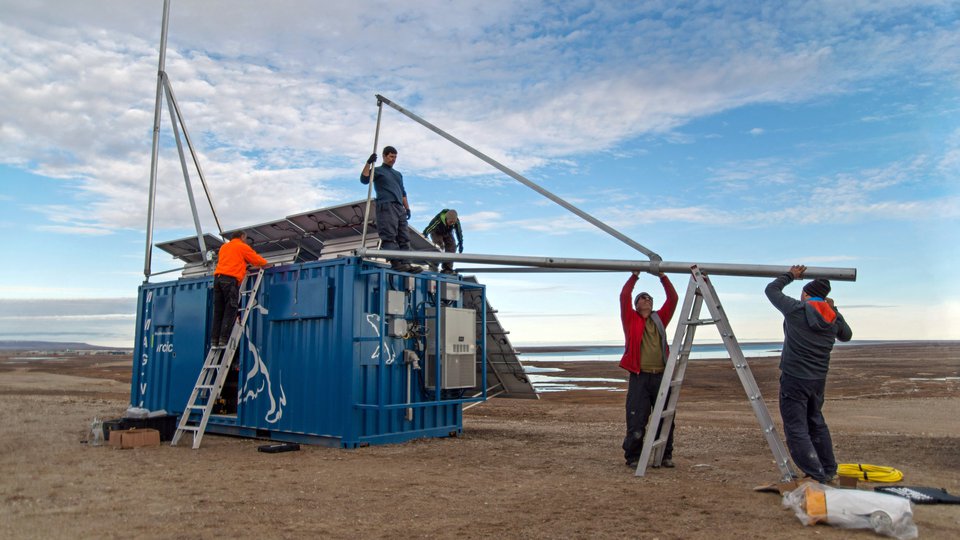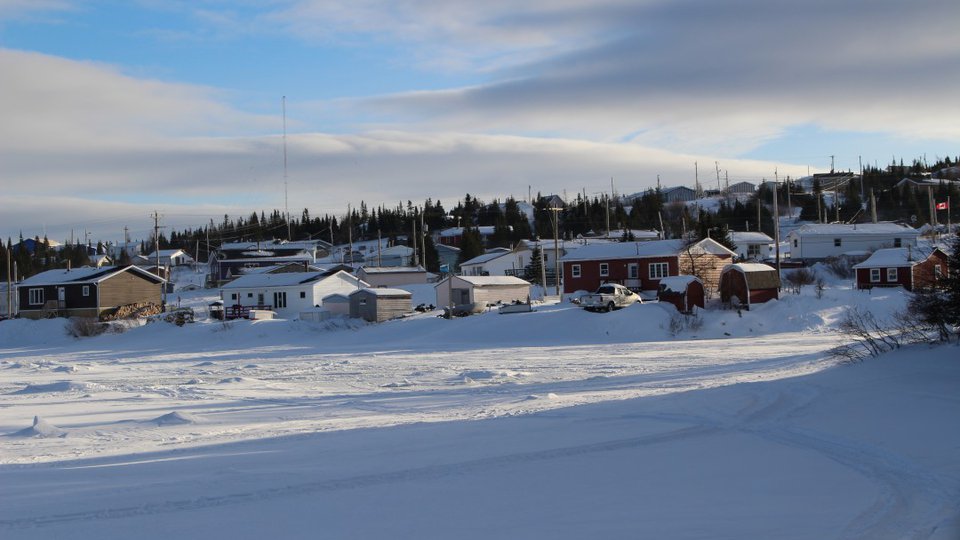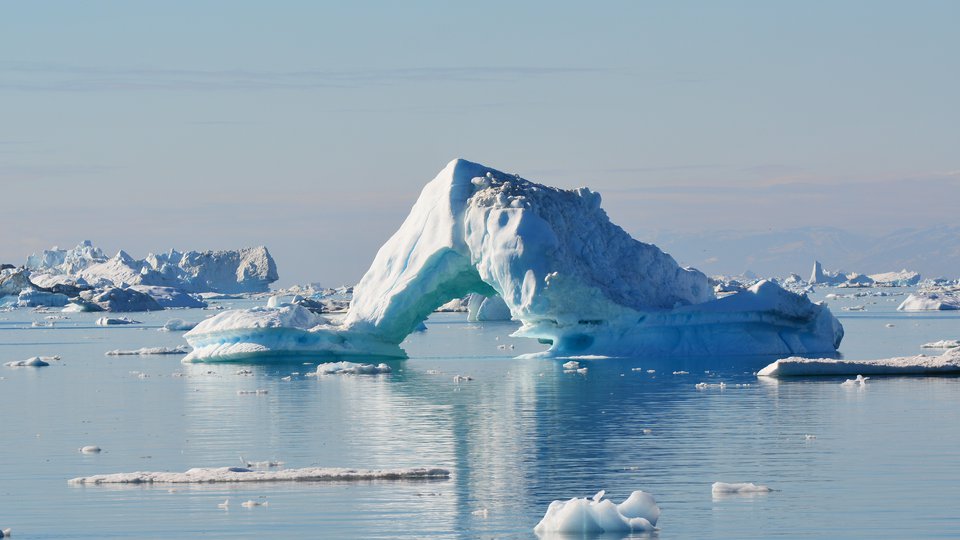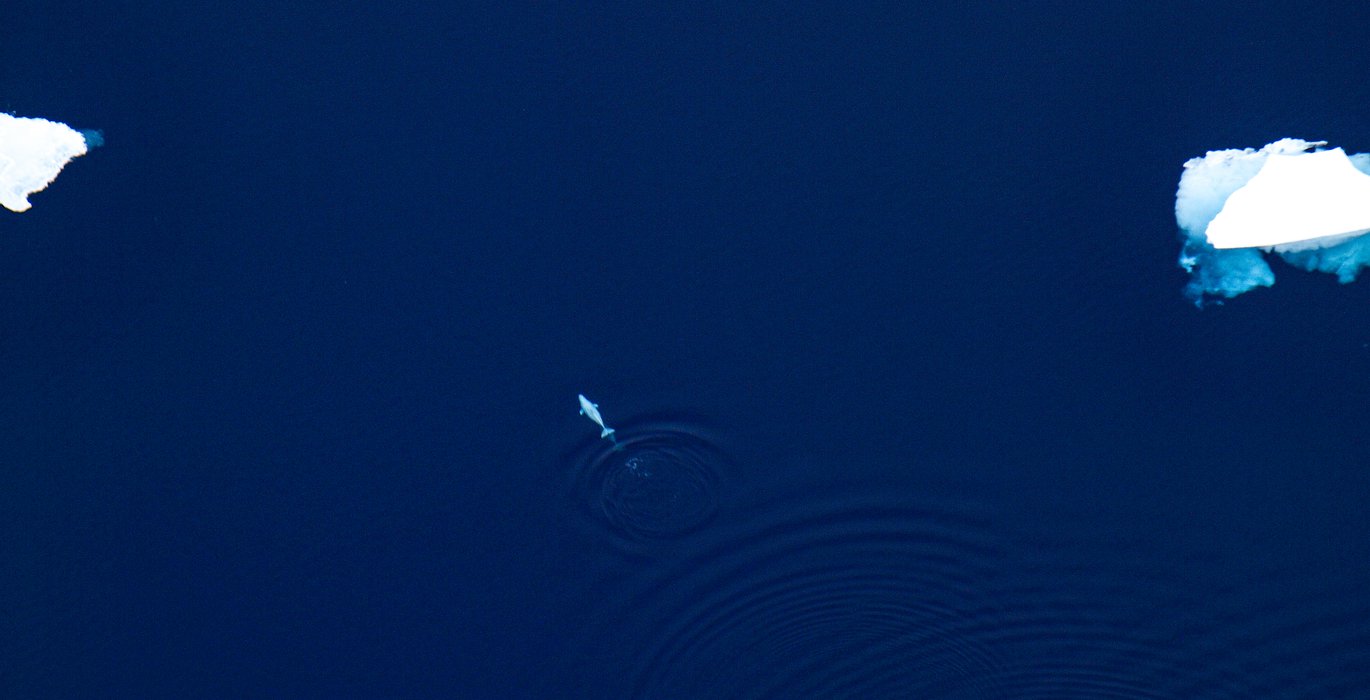
You’re sitting down to dinner and the doorbell rings, your phone buzzes and a large truck rumbles by on your quiet street.
Annoying right?
For marine mammals, such disturbances are more than annoying – they could be deadly.
We don’t fully understand how the growing acoustic disturbances caused by human activities on the ocean – such as sonar, oil drilling or the movement of large shipping vessels – is affecting whales and other marine mammals. But judging by their behaviour when exposed to these noises, we can speculate that it is at best unwelcome and at worse a survival threat that interferes with communications, causes extreme stress, and can even lead to death.
Recently, our research group at Wildlife Conservation Society Canada collaborated with researchers from Fisheries and Oceans Canada, Natural Resources Canada, JASCO Applied Sciences, and Dalhousie University to study how beluga whales react to ship traffic in the Mackenzie River estuary of the Northwest Territories. The research is available in the latest issue of the scientific journal Arctic.
Our team used acoustic recordings collected in the Tarium Niryutait Marine Protected Area (inside the most eastern portion of the MPA, called Kittigaryuit, near Tuktoyaktuk), to count beluga whale vocalizations (you can listen to beluga whale vocalizations here). We then used satellite tracking data from, and visual observations of, ships to measure how close they came to the acoustic recording stations. Finally, we looked at how beluga vocalizations changed in response to the passage of ships.
"What we found showed that the presence of ships may have important impacts on belugas. But there are ways to mitigate the problem."
William Halliday
Beluga whales are an ecologically and culturally significant species in the Arctic and sub-Arctic. Some Belugas migrate more than 2,000 km twice every year between Alaska and Canada. Their autumn migration overlaps with the majority of ship traffic in the region.
Belugas, often referred to as the canaries of the sea, use vocalizations for almost everything, including communication, hunting, and navigating. This high reliance on underwater sounds may make them particularly prone to disruptions from human-made underwater noise.
Belugas are an important subsistence food for Inuit people in the Arctic. Belugas are also likely to be one of the many Arctic species that will be dramatically impacted by climate change: both through the loss of sea ice habitat and a shifting migration of the fish that they rely on for food.
Our research showed that beluga whale vocalizations decreased when ships were within 5 km of the acoustic recorder. This could be due to belugas reducing their vocalizations when ships are near, or to them swimming away from the recorders to avoid the boats.
We had no way of tracking the vocalizing whales. However, we do have some evidence, both from our field crew and from local Inuvialuit people about whale movements.
The Inuvialuit have seen belugas actively avoiding boats along the Mackenzie River estuary for many years. While working near one of the acoustic recorders used in this study, our field crew also saw a small pod of belugas leave the area as a tugboat passed by.
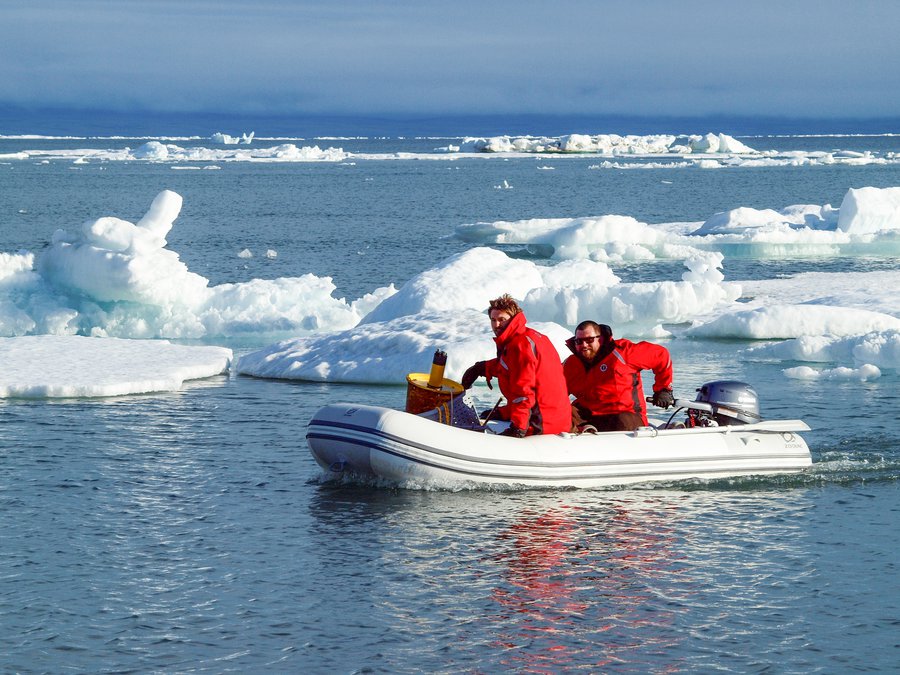
William Halliday and Matthew Pine recovering an acoustic recorder from Prince of Wales Strait between Banks Island and Victoria Island, NWT. (Photo Credit: W. Halliday)
While not conclusive, these observations support the conclusion that belugas left the area in response to ships arriving.
So what if belugas move away from ships?
The short answer is, we don’t know what the long-term implications of this behaviour are, but we can speculate.
Any change in behaviour can be considered a missed opportunity – in other words, time spent reacting to a ship is time not being spent on some other important activity, such as feeding or communication. If belugas actively swim away from ships, there is also a cost in energy that could be better spent seeking food, nursing young, or simply staying healthy.
There are, of course, other issues associated with close proximity to ships, including increased stress levels and collisions with boats. These impacts have a cumulative effect on animals can become dangerous over time.
At this point, we cannot conclude for sure what the impacts of these ships will be on belugas, but it is possible that they could lead to long-term consequences such as shorter lifespans, reduced number of offspring, or reduced overall health.
Human-caused noise is increasing rapidly, especially in the Arctic.
Thanks to climatic warming creating longer ice-free periods, ship traffic has tripled in the Canadian Arctic between 1990 and 2015 without any signs of slowing down.
Arctic whales, especially belugas and narwhals, may also be more sensitive to underwater noise than other whales. Both belugas and narwhals have been observed reacting to an ice-breaking ship more than 50 km away.
The belugas moved away from the ship. The narwhal first “froze,” as if reacting to a predator, then moved away as well.
The reactions of Arctic whales to ships has been understudied, and we still have very little idea of the specific underwater noise levels required to elicit responses from the whales. We also don’t yet know enough about how different species may react to the same noise.
That said, we do know whales use sound to bolster social cohesion (especially between mothers and calves), show aggression, attract mates, and for navigation and hunting.

William Halliday prepares an acoustic recorder for deployment. (Photo Credit: S. Insley)
The ocean is a dark and murky place, meaning sound, as opposed to visual cues, is arguably much more important to aquatic animals than to terrestrial species. Sound also travels much faster underwater, making it useful for long-distance communication, navigation, hunting, and predator avoidance.
Unfortunately, the speed and distance sound travels in water means human activity has a much larger footprint in the ocean than it does on land. Seismic surveys, pile driving, underwater demolition, and military sonar can be heard by marine animals from tens or even hundreds of kilometers away.
If they’re too close hearing damage, or even death, can result...
The most pervasive source of underwater noise are marine vessels that create continuous background noise — especially near busy ports or shipping lanes. Hearing damage isn’t normally caused by Individual ships, but the constant drone of frequent traffic can lead to hearing loss. Some animals simply leave areas where there’s too much noise, but others will compensate by changing their behaviour. Acoustic masking, for example, occurs when animals make vocalizations louder, change the pitch of their voices, or avoid making sound all together.
There are ways to mitigate the damage.
In the Tarium Niryutait Marine Protected Area in the Mackenzie River estuary, ship travel is restricted and vessels are required to follow designated supply routes. This is not a perfect solution, but by tracking the movements of belugas where ship traffic can be changed, restrictions can be implemented and refined to minimize impacts on sea animals as much as possible.
